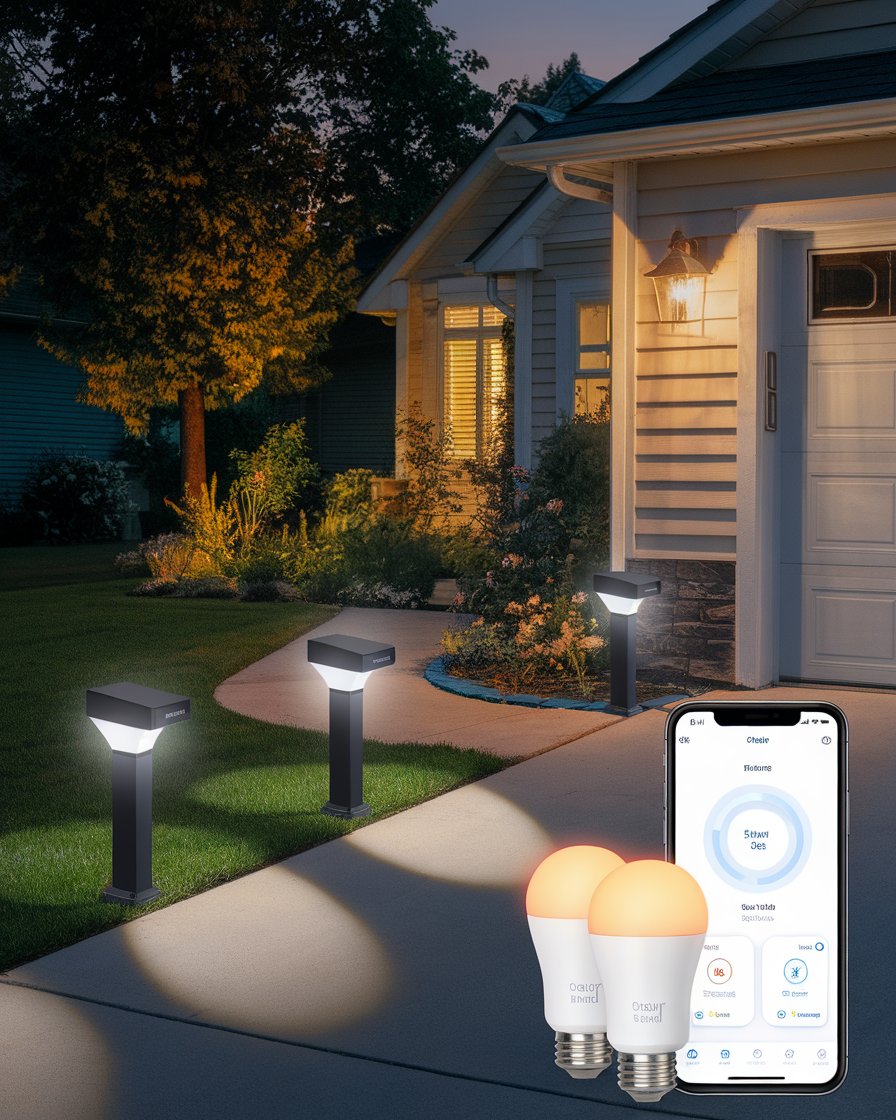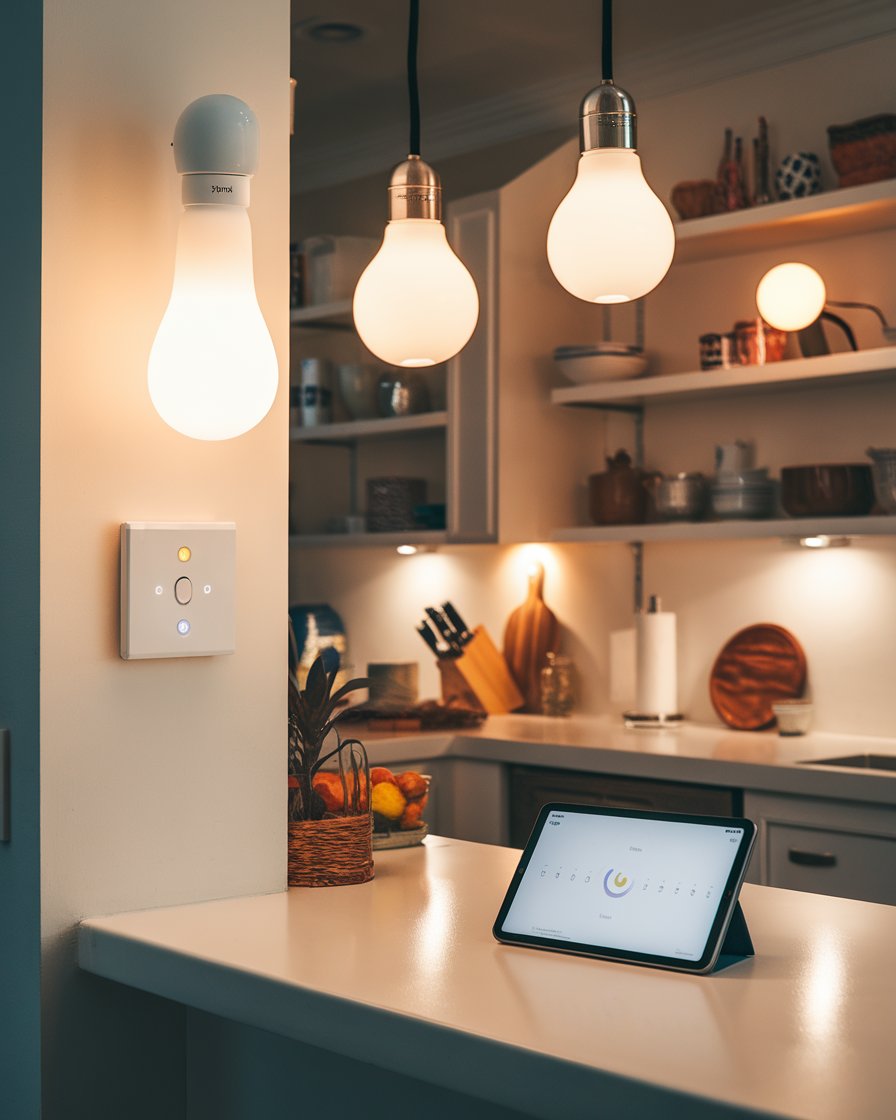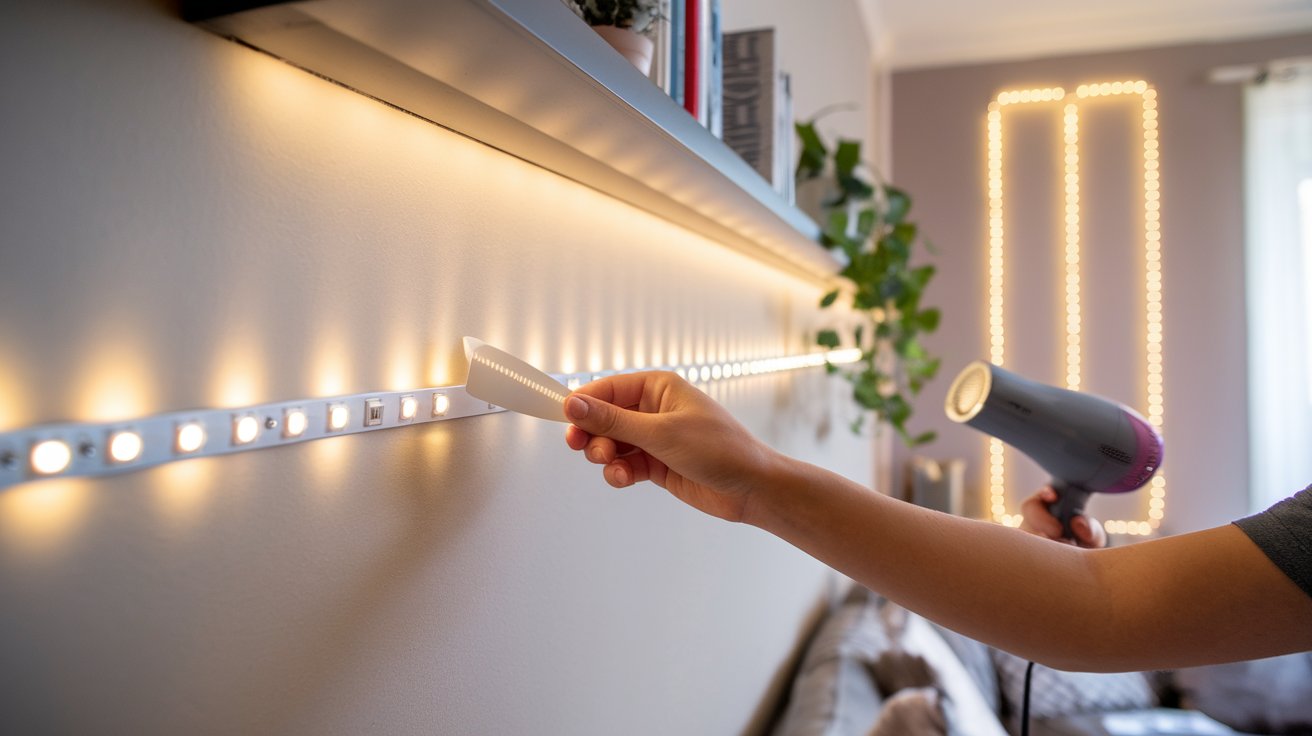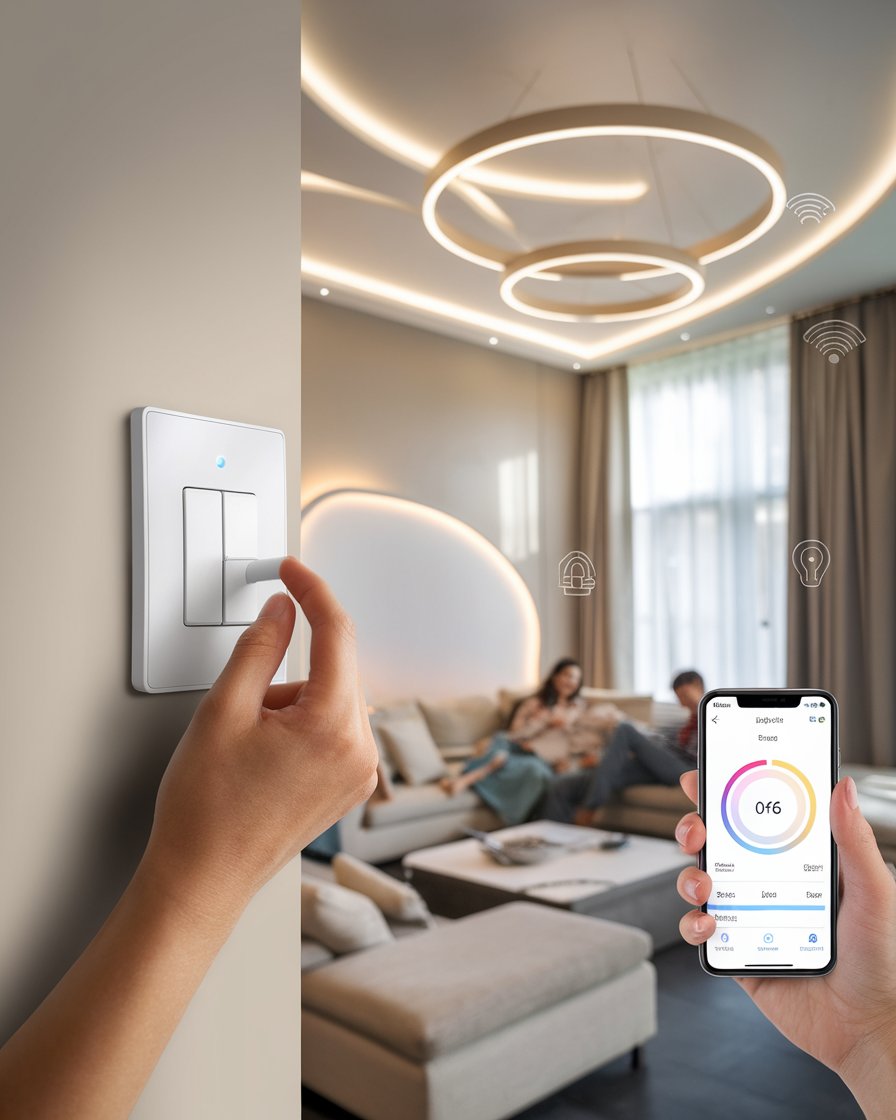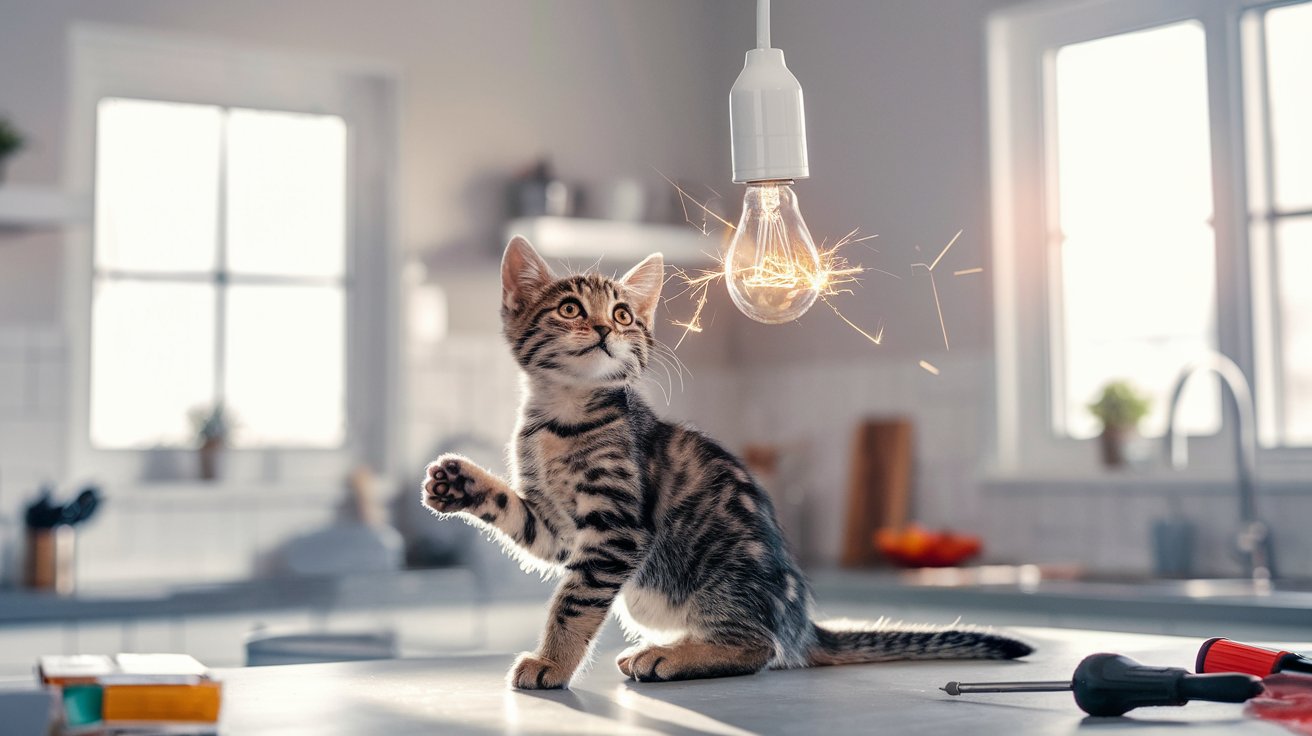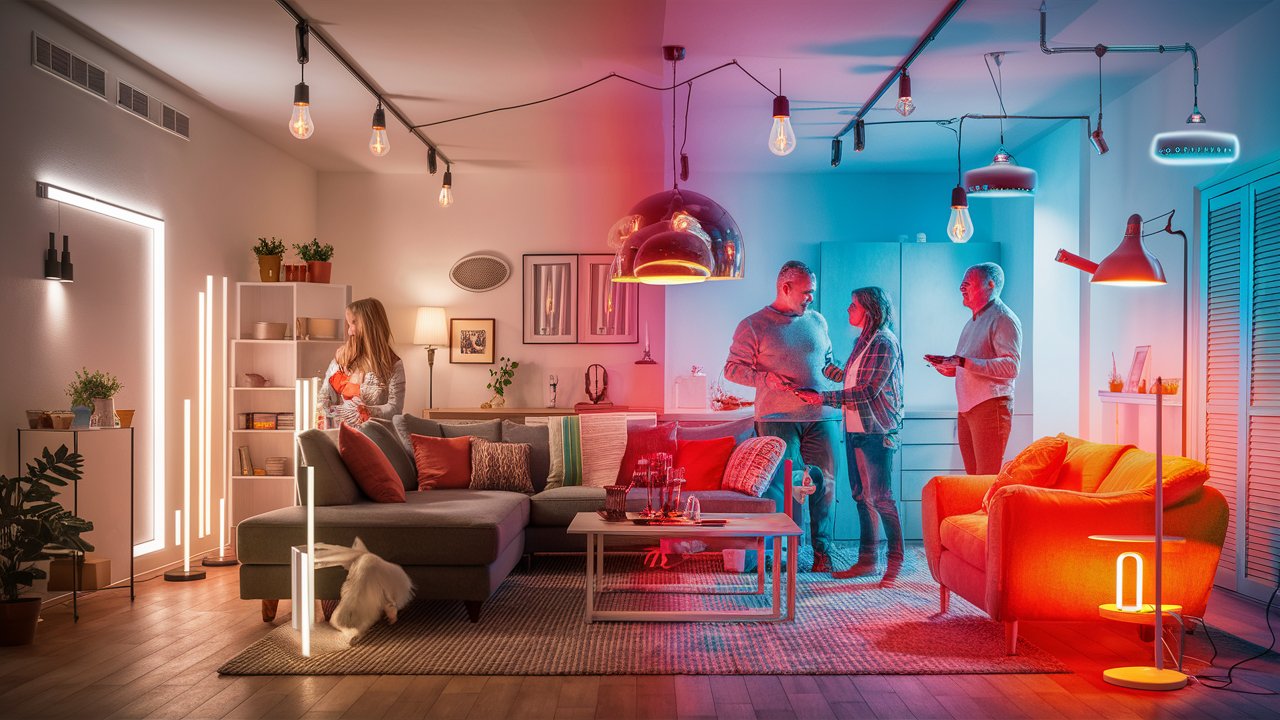Introduction
Smart lighting solutions have become an essential part of modern homes, combining convenience, energy efficiency, and enhanced security. By integrating smart bulbs, smart switches, and advanced LED lighting technology, homeowners can now control their lighting systems through voice commands or apps, creating an environment that suits their needs. Whether it’s outdoor lighting or architectural lighting, smart lighting systems provide the flexibility to adjust brightness, color temperature, and even schedule lighting scenes. With devices like Google Home or Amazon Alexa, managing smart lights has never been easier, offering homeowners both ease and energy savings.
Moreover, smart home technology doesn’t just stop at convenience; it also offers tangible benefits like reducing energy consumption through efficient light sources such as LED bulbs. These smart lightbulbs are not only compatible with most smart home devices, but they also use less power, ensuring long-term savings. Whether you need a hub or prefer wi-fi smart lighting solutions, these smart products offer a seamless integration that can turn your home into the best of the best in lighting technology.
Key Takeaways
- Smart lighting solutions enhance home safety and energy efficiency by allowing control through motion sensors, smart switches, and wireless systems.
- Integrating smart bulbs and switches with motion sensors can deter intruders while saving energy with scheduled lighting control.
- Smart dimmer switches and LED bulbs provide energy-efficient lighting, reducing consumption and costs by adjusting brightness based on needs.
- Choosing smart products like Philips Hue bulbs offers seamless control with apps and voice commands, boosting lighting efficiency and convenience.
- Smart switches ensure compatibility with various lighting systems, allowing homeowners to retrofit or upgrade their existing lights easily.
- LED technology paired with smart lighting delivers longer-lasting, energy-efficient lighting with advanced control over brightness and color temperature.
How Smart Lighting Solutions Can Transform Your Home Safety and Energy Efficiency
Smart lighting solutions are revolutionizing home safety and energy efficiency by providing users with more control over their lighting environments. By incorporating features like motion sensors and smart light switches, these systems can adjust lighting based on real-time conditions, helping save energy. Wireless smart bulbs offer remote accessibility, allowing you to control your lights even when you’re not home, enhancing security. A smart hub, such as those compatible with Philips Hue systems, connects various smart devices, making it easy to manage lighting scenes. Whether you’re aiming for energy efficiency or added security, smart lighting technology offers the best smart solution for modern homes.
Key Factors to Consider for Smart Lighting in Home Safety and Energy Efficiency
1. Enhancing Security with Motion-Activated Lighting
Motion sensors play a crucial role in smart lighting solutions, particularly for outdoor security. By automatically turning lights on when movement is detected, smart lighting systems help deter intruders. Smart bulbs integrated with motion sensors can be controlled remotely via smart hubs like Google Home or Amazon Alexa, allowing homeowners to monitor and adjust security lighting from anywhere. This added layer of control enhances home safety, providing peace of mind.
2. Energy Efficiency Through Automated Dimming
Smart dimmer switches and LED bulbs are at the forefront of energy-saving technology in home lighting systems. By adjusting brightness levels based on activity or time of day, these systems can drastically reduce energy consumption. Smart lighting also allows for customizable schedules, so lights are only used when needed. The use of LED technology further enhances energy efficiency, as these bulbs consume less power than traditional incandescent lighting.
3. Remote Control and Convenience
The convenience of smart lighting systems lies in their ability to be controlled remotely through apps or voice commands. Whether you’re adjusting outdoor lighting or controlling multiple indoor lights, smart lighting systems integrated with hubs like Philips Hue offer seamless control from anywhere. This flexibility not only provides energy savings but also enhances security, as users can simulate occupancy while away from home.
4. Compatibility with Existing Lighting Systems
Upgrading to smart lighting solutions doesn’t mean replacing your entire system. Many smart light switches and bulbs are designed to be compatible with existing light fixtures and communication protocols, like Wi-Fi and Zigbee. This allows homeowners to retrofit current lighting setups, making the transition to smart lighting more affordable and less intrusive. Ensuring compatibility with platforms like Alexa and Google Home ensures a smooth and hassle-free integration.
5. Customizable Lighting Scenes for Enhanced Ambiance
One of the key benefits of smart lighting is the ability to create customizable lighting scenes for different occasions. Whether it’s dimming the lights for a cozy evening or brightening them for working hours, smart lighting systems allow homeowners to adjust settings to match their needs. With apps that are easy to use, setting up these scenes takes only a few taps, and integrating these features with voice assistants makes them even more accessible.
6. Maximizing Safety with LED Technology
LED technology paired with smart lighting solutions offers long-term reliability and safety. LED bulbs are not only energy-efficient but also safer to use as they emit less heat than traditional lighting options. This reduces the risk of overheating and potential fire hazards. Smart systems with LED lighting also have a longer lifespan, meaning less frequent replacements and better overall safety for your home.
Smart Lighting Solutions for Home Security Enhancement
Smart lighting systems provide an excellent solution for enhancing home security. By integrating motion sensors with smart bulbs, homeowners can set their lights to turn on automatically when movement is detected, deterring potential intruders. Wireless smart lighting also allows users to control their lights remotely through a smart hub, ensuring their home is well-lit even when they’re away. Smart switches add another layer of control, offering the ability to schedule lights or activate them at specific times for added security. These smart lighting solutions not only save energy but also give peace of mind by keeping homes safe.
Energy Savings with Motion Sensors and Smart Dimmer Switches
Energy efficiency is at the core of smart lighting technology. Motion sensors ensure that lights are only activated when needed, preventing unnecessary energy consumption. Additionally, smart dimmer switches allow users to adjust light intensity based on specific needs, saving even more energy. The use of LED bulbs in smart systems further reduces energy consumption as they are more efficient than traditional bulbs. By syncing your smart lights with a hub, you can control multiple lights with ease, ensuring maximum energy savings. Smart lighting solutions are the best way to reduce your energy bill while maintaining convenience.
Top Smart Products to Boost Your Home’s Lighting Efficiency
Choosing the best smart products for your home lighting can significantly improve both functionality and energy savings. Smart bulbs, like Philips Hue, offer versatility and can be controlled via apps or voice commands using smart home hubs like Google Home. With dimmer options and smart switches, you can fine-tune the brightness, enhancing both ambiance and energy efficiency. LED technology in these bulbs ensures long-lasting performance, while compatibility with multiple smart home platforms means seamless integration with other devices. These top smart lighting solutions provide both flexibility and efficiency, making them an ideal choice for any home.
Case Study: Maximizing Energy Efficiency with Philips Hue Smart Bulbs
A study conducted by the Lawrence Berkeley National Laboratory explored the energy-saving potential of smart lighting systems in residential settings. The research compared traditional incandescent lighting to LED smart bulbs like Philips Hue and found that homes using smart bulbs experienced a significant reduction in energy consumption—up to 75%. The study highlighted that integrating Philips Hue with smart home hubs, such as Google Home and Amazon Alexa, allowed users to schedule lights and control brightness, further optimizing energy usage. Additionally, the use of smart switches and dimmer options helped customize lighting based on personal preferences, boosting both functionality and energy efficiency. The case study concluded that smart lighting systems, particularly those using advanced LED technology, provide a long-term solution for energy-conscious homeowners looking to reduce costs while improving lighting quality.
Choosing the Best Smart Bulbs for Your Home
When selecting the best smart bulbs for your home, it’s essential to consider both compatibility and features. Philips Hue lights are among the top smart lighting products, offering easy control via smart home platforms like Amazon Alexa or Google Home. These bulbs come with features like dimming, color temperature adjustments, and scheduling, allowing you to customize your lighting experience. Additionally, the compatibility of these bulbs with wireless smart lighting systems ensures that you can integrate them with your existing smart devices. Choosing the right smart bulbs can significantly improve the lighting quality and efficiency of your home.
Smart Switches vs. Smart Bulbs: Which is the Best Smart Option?
Both smart switches and smart bulbs offer unique benefits, but choosing the best option depends on your lighting needs. Smart bulbs are ideal for those who want a quick and easy way to upgrade their lighting without replacing switches. On the other hand, smart switches provide more control over multiple lights and are better suited for whole-home lighting solutions. With compatibility across various smart lighting systems and the ability to control your lights remotely, smart switches are often considered the top smart solution for those looking to automate their home’s lighting system fully.
Exploring the Compatibility of Smart Light Switches with Various Lighting Systems
Smart light switches are designed to be compatible with a wide range of lighting systems, making them a popular choice for those seeking to upgrade their home’s lighting solution. Whether you’re retrofitting existing lights or installing a new lighting fixture, these switches integrate effortlessly with various communication protocols like Wi-Fi or Zigbee, enhancing the ease of controlling your lights. They also work with a variety of smart lighting systems, including Philips Hue and other wireless lighting platforms. With smart switches, you can control the lights in any room, schedule your lighting scenes, and optimize energy use, providing a seamless and user-friendly lighting solution.
How to Ensure Compatibility with Existing Lighting Systems
Ensuring that your smart light switches are compatible with your existing lighting systems is essential for a smooth installation process. Most smart switches work with standard light fixtures and can be easily integrated with Wi-Fi or Zigbee-based lighting systems. It’s important to check whether your current setup supports dimmers, as some smart switches may not be compatible with older lighting fixtures. Using a smart hub can help manage the compatibility of various devices, ensuring that all your smart products work seamlessly together, from switches to bulbs. Taking these steps ensures an efficient and hassle-free lighting solution.
Best Smart Hubs for Seamless Smart Light Integration
Smart hubs are essential for integrating smart light switches with various home automation systems. Philips Hue Bridge, Google Home, and Amazon Echo are popular choices for connecting your smart lighting products. These hubs act as the central control system, allowing you to sync your lights and smart switches across different rooms. They also enhance the compatibility of smart products with various platforms, ensuring that you can manage all your lighting needs through a single app or voice command. Choosing the right smart hub will ensure a seamless and efficient smart lighting experience in your home.
“Technology is best when it brings people together.” – Matt Mullenweg
Why Smart Lights Work Best with Advanced LED Technology
Smart lights work best when paired with advanced LED technology due to its energy efficiency, longer lifespan, and ability to produce various lighting effects. LED bulbs consume less energy than traditional lighting while delivering superior brightness, making them ideal for smart lighting applications. When integrated with a smart hub, you can adjust brightness, color temperature, and lighting scenes with ease. The compatibility of LED technology with smart products, like smart switches and dimmers, enhances overall lighting control. This combination offers the best smart lighting experience, ensuring your home is not only energy-efficient but also visually appealing.
Benefits of LED Technology in Smart Lighting Systems
LED technology offers numerous benefits when integrated with smart lighting systems. LEDs consume far less energy than traditional incandescent or halogen bulbs, making them a sustainable choice for smart home lighting. They also have a longer lifespan, reducing the need for frequent replacements. Smart LEDs are compatible with dimmers and smart switches, allowing users to adjust brightness levels and color temperature based on their preferences. Whether you’re setting up outdoor smart lighting or enhancing indoor spaces, LED technology provides a cost-effective, energy-efficient solution that enhances the overall performance of your smart lights.
Future Trends in Smart Lighting and LED Integration
As LED technology continues to evolve, future trends in smart lighting point towards even more seamless integration and smarter control systems. Advances in wireless communication protocols and intelligent lighting applications are allowing users to sync their smart lights with other devices, like security systems and entertainment hubs. LEDs are also becoming more customizable, offering a wider range of color temperatures and lighting scenes. With continuous improvements in energy efficiency, LED technology will play an increasingly central role in the development of smart lighting solutions, helping homes stay both eco-friendly and tech-forward.
Conclusion
Smart lighting solutions offer a perfect blend of convenience, energy efficiency, and security for modern homes. With the integration of smart bulbs, smart switches, and advanced LED technology, homeowners can easily control their lighting systems through voice commands or apps like Alexa and Google Home, creating customized lighting environments. Whether it’s adjusting white light for indoor spaces or using smart LED bulbs for outdoor lighting applications, these systems offer flexibility and enhance home security.
Moreover, smart home lighting plays a crucial role in reducing energy consumption by using efficient light sources such as LED retrofits and dimmable smart switches. These affordable smart lighting solutions are compatible with multiple platforms, ensuring seamless control of lights with features like scheduling, brightness adjustments, and even remote access through apps. By adopting smart lighting technology, you can ensure that your home is both energy-efficient and beautifully illuminated.


